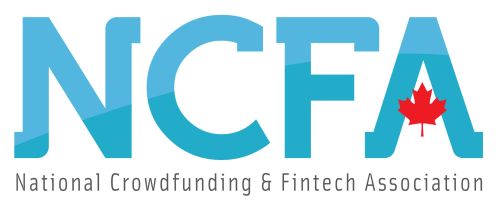2023 Canadian Insurtech: What You Need To Know
Insurtech | Oct 10, 2023


The insurtech landscape in Canada is dynamically evolving, navigating through technological advancements and emerging risks, while simultaneously adapting to shifting customer expectations and regulatory landscapes.
In this exploration, we lean on the comprehensive insights provided by Luge Capital in their detailed report on the Canadian Insurtech Landscape for 2023. The report, compiles data, trends, and projections, guiding readers through multifaceted developments and innovations that are sculpting the future of insurtech in Canada.
Canadian InsurTech Market Insights
Overview
- In 2022, the Finance and Insurance industry contributed $152 billion, which is 7.4% to Canada’s Gross Domestic Product.
- It experienced a 3.65% CAGR between 2019 and 2022 and employed nearly 1 million people across Canada.
- The Canadian insurance industry wrote over $216 billion in premiums in 2021.
- Ontario (19%) and Quebec (31%) accounted for half of all insurtech startup funding within Canada.
- Ontario is home to the largest number of Canadian insurtechs (over 100).
- Many large Canadian insurers, such as Intact, Manulife, and Sun Life, are based in Ontario, making it a very large market for insurance in Canada.
- Quebec, with insurers like Desjardins, Industrial Alliance, and Beneva headquartered there, is a pivotal player in the insurtech startup activity.
- The Property & Casualty and Life & Health markets paid $150.8 billion in combined benefits and claims in 2021.
See: Here is why InsurTech is heating up as an investment category
- Over the last five years, auto insurance‘s direct written premiums have increased, but the rate of increase slowed down in 2020 and 2021 due to the Covid-19 pandemic. In a post-pandemic world, auto insurance rates are expected to increase by high single digits as cars have returned to the roads and replacement costs increase.
- Healthcare and Insurance – according to a study by Angus Reid Institute and the Canadian Medical Association (CMA), 1 in 5 Canadians do not have a family doctor, and a significant portion of those who do find it difficult to receive timely access to care. The shortage of family physicians varies by region, with Ontario having the lowest figure (13%) and Atlantic Canada having some of the highest shortage rates (e.g., Nova Scotia, where the figure is 26%).
- Investor Participation
- Access to capital is crucial for insurtech startups, and a growing number of venture capital (VC) firms have been investing in this vertical over the past several years. There is a deeper appreciation among the VC community regarding the complexities of the insurance industry and opportunities for innovation.
- With increasing participation from more generalist funds and continued support from firms with sector expertise, the insurtech funding market is anticipated to remain vibrant.
Incumbent and Insurtech Collaboration
- The insurtech landscape in Canada is witnessing a significant trend where traditional insurance carriers and insurtech startups are forming collaborative partnerships. Incumbents bring to the table their substantial market share and existing business, while insurtechs introduce modern technology and AI capabilities.
See: Growing Trends: Insurtech and AI
- The adoption of cloud technology is facilitating these collaborations, enabling digital transformation and fostering the development and application of technologies like AI.
- This symbiotic relationship is not only propelling technological advancements but also enhancing the capacity to innovate and meet evolving customer needs.
The Pivotal Role of Third-party Data
- Third-party data has emerged as a crucial element in streamlining consumer purchasing processes, improving underwriting efficiency, and automating claim management.
- For instance, data providers like HonestDoor allow carriers to access information about properties, such as the year of construction or the number of units, thereby enabling pre-filling of application forms and reducing the need for manual entry. This intelligent use of alternative data is not only enhancing the digital customer experience by removing friction but also contributing to increased conversion and underwriting accuracy.
Connected Technologies
- Connected technologies, such as IoT and mobile technologies, are being used to incentivize risk-reducing behavior and provide continuous support to policyholders. For example, in auto insurance, telematics programs, which have witnessed an 18%+ Y-o-Y increase in Usage-Based Insurance (UBI) quotes in January 2023, are being adopted to allow for discounted premiums.
- Similarly, in home insurance, carriers are exploring new ways to assist policyholders in better managing and monitoring their homes through connected technologies, thereby bolstering value, efficiency, and customer loyalty.
Navigating Evolving (Cyber) Risks
- The insurtech sector is actively developing expertise and solutions to help insurers understand and quantify new areas of risk, particularly in the realm of cybersecurity.
- With a 38% increase in international cyber attacks between 2021 and 2022 and Canadian net written premiums reaching $372 million in 2022, the market for cyber insurance is anticipated to witness rapid growth.
See: Costanoa: Insurtech Investment Themes and Opportunities
- Insurers are adapting their underwriting criteria and increasing premiums in response to large losses in recent years, indicating a pressing need for further evolution in underwriting cyber insurance.
Holistic, Multi-channel Distribution Strategies
- The adoption of holistic, multi-channel distribution strategies, which may encompass online platforms, agents, and a combination of both, is proving to be effective in the insurance industry. The focus is on providing true omni-channel experiences, offering customers the choice of purchasing their policy online, speaking to an agent directly, or a combination of both.
- This approach not only optimizes conversions but also ensures that the customer journey is smooth, consistent, and tailored to individual preferences.
Future Remains Bright
The insurtech landscape in Canada is at a pivotal juncture, where technological advancements, emerging risks, and shifting customer expectations are shaping the future of the industry.
See:
Ontario’s FSRA Spearheads Insurance Innovation with Direct Access Model
Decarbonizing Insurance and the Adaptation of Carriers to a New Zero Economy
Duuo by Co-operators: A New Era of Embedded Insurance for Canadian Businesses
Global Reinsurance Giant Calls for More Innovation, Capital, and an Insurance-Linked Securities (ILS) Marketplace
By embracing collaborative approaches, leveraging third-party data, adopting connected technologies, navigating through emerging risks, and implementing holistic distribution strategies, the insurtech sector is not only addressing current challenges but also paving the way for a future where innovation and customer-centricity are at the forefront.
Download the full 68 page PDF report –> here

 The National Crowdfunding & Fintech Association (NCFA Canada) is a financial innovation ecosystem that provides education, market intelligence, industry stewardship, networking and funding opportunities and services to thousands of community members and works closely with industry, government, partners and affiliates to create a vibrant and innovative fintech and funding industry in Canada. Decentralized and distributed, NCFA is engaged with global stakeholders and helps incubate projects and investment in fintech, alternative finance, crowdfunding, peer-to-peer finance, payments, digital assets and tokens, artificial intelligence, blockchain, cryptocurrency, regtech, and insurtech sectors. Join Canada’s Fintech & Funding Community today FREE! Or become a contributing member and get perks. For more information, please visit: www.ncfacanada.org
The National Crowdfunding & Fintech Association (NCFA Canada) is a financial innovation ecosystem that provides education, market intelligence, industry stewardship, networking and funding opportunities and services to thousands of community members and works closely with industry, government, partners and affiliates to create a vibrant and innovative fintech and funding industry in Canada. Decentralized and distributed, NCFA is engaged with global stakeholders and helps incubate projects and investment in fintech, alternative finance, crowdfunding, peer-to-peer finance, payments, digital assets and tokens, artificial intelligence, blockchain, cryptocurrency, regtech, and insurtech sectors. Join Canada’s Fintech & Funding Community today FREE! Or become a contributing member and get perks. For more information, please visit: www.ncfacanada.org
Related Posts
- SEO Powered Content & PR Distribution. Get Amplified Today.
- PlatoData.Network Vertical Generative Ai. Empower Yourself. Access Here.
- PlatoAiStream. Web3 Intelligence. Knowledge Amplified. Access Here.
- PlatoESG. Carbon, CleanTech, Energy, Environment, Solar, Waste Management. Access Here.
- PlatoHealth. Biotech and Clinical Trials Intelligence. Access Here.
- Source: https://ncfacanada.org/2023-canadian-insurtech-what-you-need-to-know/
- :has
- :is
- :not
- :where
- $UP
- 1
- 10
- 100
- 150
- 16
- 2018
- 2019
- 2020
- 2021
- 2022
- 2023
- 28
- 300
- 8
- a
- About
- access
- accounted
- accuracy
- across
- actively
- activity
- adaptation
- addressing
- adopted
- Adopting
- Adoption
- advancements
- affiliates
- Agent
- agents
- AI
- All
- Alliance
- allow
- also
- alternative
- alternative finance
- among
- an
- and
- Anticipated
- Application
- appreciation
- approach
- approaches
- ARE
- areas
- artificial
- artificial intelligence
- AS
- Assets
- assist
- Association
- At
- auto
- automating
- based
- BE
- become
- been
- being
- benefits
- Better
- between
- Billion
- blockchain
- both
- bring
- business
- businesses
- but
- by
- cache
- Calls
- Canada
- Canadian
- Canadians
- capabilities
- Capacity
- capital
- care
- carriers
- cars
- Category
- challenges
- claim
- claims
- closely
- Cloud
- CLOUD TECHNOLOGY
- CMA
- collaborations
- collaborative
- combination
- combined
- community
- complexities
- comprehensive
- connected
- construction
- consumer
- continued
- continuous
- contributed
- contributing
- Conversion
- conversions
- Costs
- COVID-19
- COVID-19 pandemic
- create
- criteria
- Crowdfunding
- crucial
- cryptocurrency
- Current
- customer
- customer expectations
- customer experience
- Customer Journey
- Customers
- cyber
- Cybersecurity
- Dark
- data
- decentralized
- deeper
- Desjardins
- detailed
- developing
- Development
- developments
- difficult
- digital
- Digital Assets
- Digital Transformation
- direct
- Direct access
- directly
- distributed
- distribution
- do
- Doctor
- Domestic
- down
- due
- dynamically
- e
- economy
- ecosystem
- Education
- Effective
- efficiency
- element
- embedded
- embracing
- emerged
- emerging
- employed
- enabling
- encompass
- engaged
- enhancing
- ensures
- entry
- Era
- Ether (ETH)
- evolution
- evolving
- example
- existing
- expectations
- experience
- experienced
- Experiences
- expertise
- exploration
- Exploring
- facilitating
- family
- Figure
- finance
- financial
- financial innovation
- Find
- fintech
- firms
- five
- Focus
- For
- Forbes
- forefront
- forms
- fostering
- friction
- from
- FSRA
- full
- funding
- funding opportunities
- further
- future
- get
- giant
- Global
- Government
- gross
- Growing
- Growth
- Half
- Have
- having
- headquartered
- help
- helps
- here
- High
- highest
- holistic
- Home
- Homes
- http
- HTTPS
- implementing
- improving
- in
- Increase
- increased
- increasing
- indicating
- individual
- industrial
- industry
- information
- innovate
- Innovation
- innovations
- innovative
- insights
- instance
- Institute
- insurance
- insurance industry
- insurers
- Insurtech
- Intelligence
- Intelligent
- International
- introduce
- investment
- IT
- Jan
- January
- journey
- jpg
- Know
- landscape
- large
- largest
- Last
- leveraging
- Life
- light
- like
- losses
- lowest
- Making
- managing
- manual
- Manulife
- Market
- market share
- marketplace
- Markets
- MARKETWATCH
- max-width
- May..
- medical
- Meet
- member
- Members
- million
- Mobile
- model
- Modern
- monitoring
- more
- multifaceted
- navigating
- nearly
- Need
- needs
- net
- networking
- New
- number
- Oct
- of
- offering
- Omni-Channel
- on
- online
- online platforms
- only
- Ontario
- opportunities
- Optimizes
- or
- over
- page
- paid
- pandemic
- participation
- particularly
- partners
- partnerships
- past
- Paving
- payments
- peer to peer
- People
- perks
- pivotal
- Platforms
- plato
- Plato Data Intelligence
- PlatoData
- player
- please
- policy
- post-pandemic
- pressing
- processes
- projections
- projects
- propelling
- provide
- provided
- providers
- provides
- providing
- proving
- purchasing
- Quebec
- quotes
- rapid
- Rate
- Rates
- reaching
- readers
- realm
- receive
- recent
- reducing
- regarding
- region
- Regtech
- regulatory
- remain
- remains
- removing
- replacement
- report
- response
- Risk
- risks
- roads
- Role
- s
- sector
- Sectors
- Securities
- Services
- several
- shaping
- Share
- SHIFTING
- shortage
- significant
- simultaneously
- single
- smooth
- Solutions
- some
- speaking
- stakeholders
- startup
- Startups
- Status
- Stewardship
- strategies
- Study
- substantial
- such
- Sun
- support
- table
- tailored
- technological
- Technologies
- Technology
- telematics
- that
- The
- The Future
- their
- themes
- There.
- thereby
- These
- third-party
- third-party data
- this
- those
- thousands
- Through
- timely
- Title
- to
- today
- Tokens
- traditional
- Transformation
- Trend
- Trends
- true
- UBI
- understand
- underwriting
- units
- use
- used
- value
- VC
- venture
- venture capital
- venture capital (VC)
- vertical
- very
- vibrant
- Visit
- Way..
- ways
- we
- What
- which
- while
- WHO
- why
- Wikipedia
- with
- within
- witness
- witnessed
- witnessing
- works
- world
- written
- wrote
- year
- years
- you
- zephyrnet
- zero











